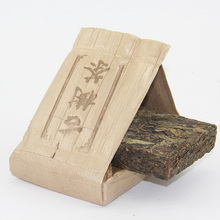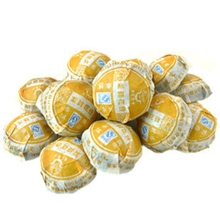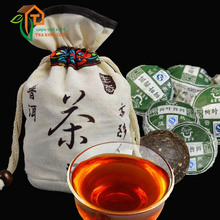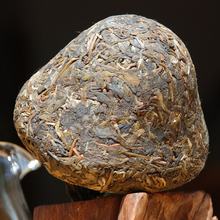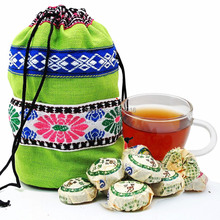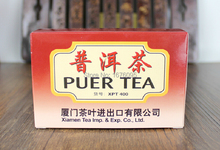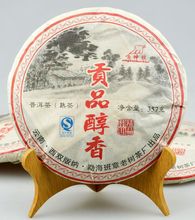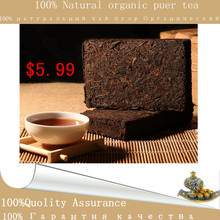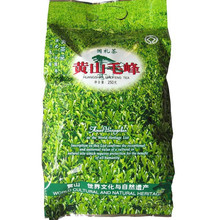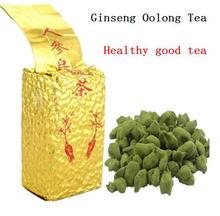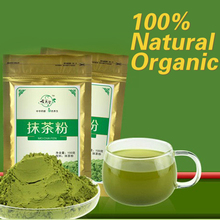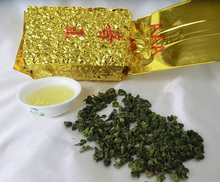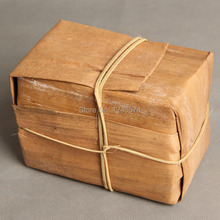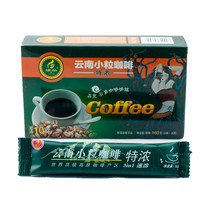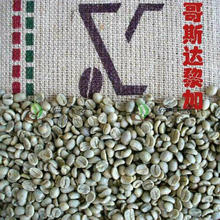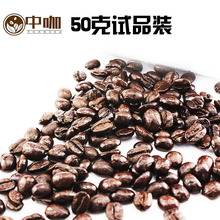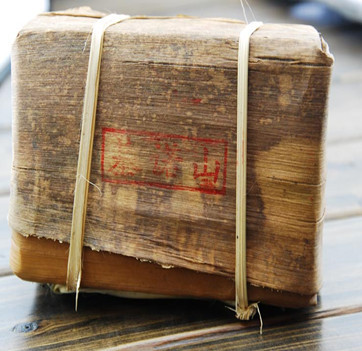
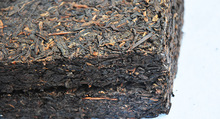

Made in1970 raw pu er tea,500g raw puer tea,ansestor antique,honey sweet,well-stacked,dull-red Puerh,ancient tree,Free Shipping
| item Type: | Pu'Er Tea |
|---|---|
| Grade: | AAAAA |
| Shelf Life: | The older the better |
| Age: | 31 - 40 Years |
| Style: | Compressed Tea |
| Packaging: | Brick |
| Certification: | QS |
| Weight (kg): | 0.500 |
Product Description
Banzhang is a small village in Yunnan with only 117 families living there. The village is located at a mountain top 1700-1900m above sea level. With 2088 annual sunshine hours and mists around the year, the wild ancient trees grown in this village provide best leaves for tea making, and this village has been one of the four famous Puer tea origins in China. The village is also endowed with a diversity of vegetation, fresh air, and stunning views. Due to Puer trees are grown among numerous camphor tress in this natural wild mountain, Puer tea produced in Banzhang village acquires the unit scent of camphor tress. Banzhang Puer tea is purely organic, as it is made from wild tea trees naturally grown in wild mountain since hundreds of years ago without any fertilizer or pollution. Therefore it contains rich nutrients and is very good for health. It has proven effects on slimming, fat reduction, blood pressure reduction. Puer tea is worth collecting, as its flavor improves with years. In terms of flavor, Banzhang Puer tea is characterized by strong flavor, thick texture, mellowness, lingering aftertaste after bitterness.
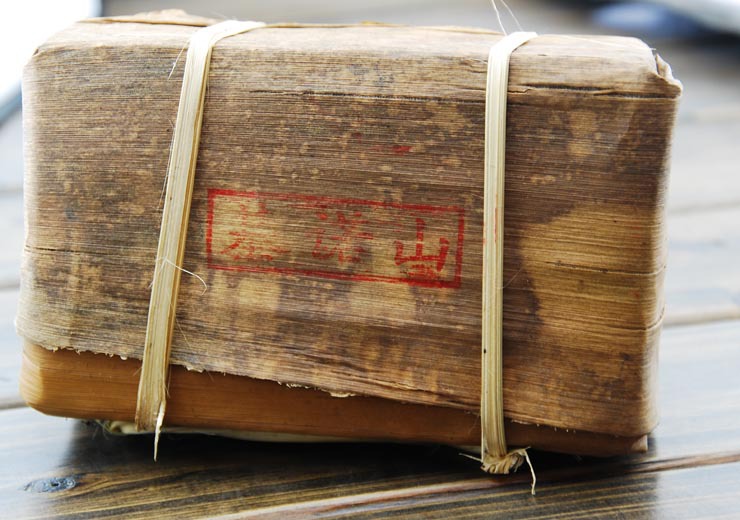 Banzhang Puer tea is purely organic, as it is made from wild tea trees naturally grown in wild mountain since hundreds of years ago without any fertilizer or pollution. Therefore it contains rich nutrients and is very good for health. It has proven effects on slimming, fat reduction, blood pressure reduction. Puer tea is worth collecting, as its flavor improves with years. In terms of flavor, Banzhang Puer tea is characterized by strong flavor, thick texture, mellowness, lingering aftertaste after bitterness.
Banzhang Puer tea is purely organic, as it is made from wild tea trees naturally grown in wild mountain since hundreds of years ago without any fertilizer or pollution. Therefore it contains rich nutrients and is very good for health. It has proven effects on slimming, fat reduction, blood pressure reduction. Puer tea is worth collecting, as its flavor improves with years. In terms of flavor, Banzhang Puer tea is characterized by strong flavor, thick texture, mellowness, lingering aftertaste after bitterness.
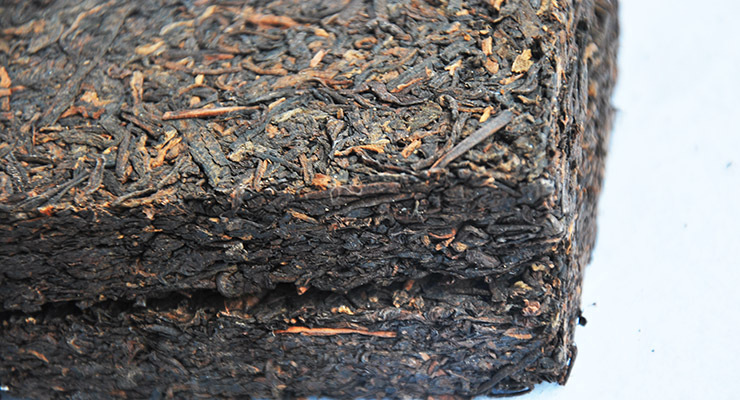 Banzhang Puer tea is purely organic, as it is made from wild tea trees naturally grown in wild mountain since hundreds of years ago without any fertilizer or pollution. Therefore it contains rich nutrients and is very good for health. It has proven effects on slimming, fat reduction, blood pressure reduction. Puer tea is worth collecting, as its flavor improves with years. In terms of flavor, Banzhang Puer tea is characterized by strong flavor, thick texture, mellowness, lingering aftertaste after bitterness
Banzhang Puer tea is purely organic, as it is made from wild tea trees naturally grown in wild mountain since hundreds of years ago without any fertilizer or pollution. Therefore it contains rich nutrients and is very good for health. It has proven effects on slimming, fat reduction, blood pressure reduction. Puer tea is worth collecting, as its flavor improves with years. In terms of flavor, Banzhang Puer tea is characterized by strong flavor, thick texture, mellowness, lingering aftertaste after bitterness
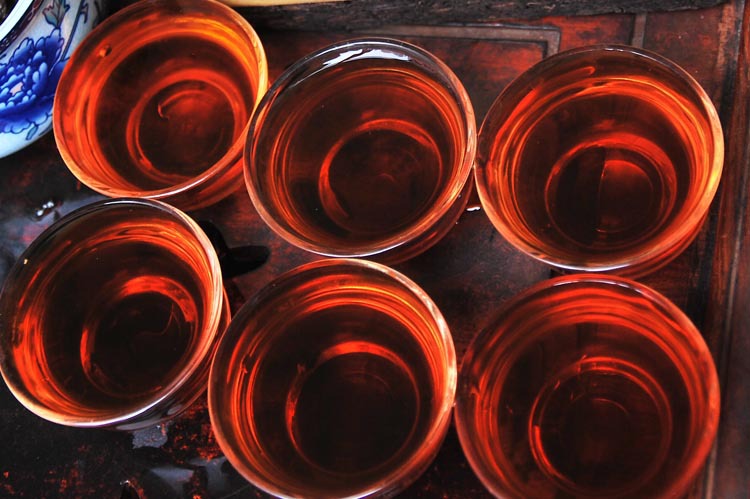
The Storage of Puerh Tea
Puerh tea has also been lauded as the “drinkable antiqueâ€. The flavor and color of Puerh Tea changes when properly stored over a period of time; fresh raw tea brews into a bright, yellowish broth and possesses a strong, almost harsh flavor; aged raw tea brews an amber broth and possesses a mellow flavor. Fresh ripe tea brews into a bright red broth possessing a smooth mellow flavor; old ripe tea brews dark red with a thick mellow flavor. The flavor, quality and value of Puerh tea constantly increases over time with proper storage,and the longer the better.
Ripe pu-erh
"Ripened" tea is pressed raw tea that has been specially processed to imitate aged "raw" Sheng Cha tea. The process used to convert raw tea into ripened pu'er manipulates conditions to approximate the result of the aging process by prolonged bacterial and fungal fermentation in a warm humid environment under controlled conditions, a technique called "wet piling" .
It can be consumed without further aging, or it can be stored further to "air out" some of the less savory flavors and aromas acquired during fermentation. The tea is sold both in flattened and loose form.
Judging quality
Quality of the tea can be determined through inspecting the dried leaves, the tea liquor, or the spent tea leaves. The "true" quality of a specific batch of pu'er can ultimately only be revealed when the tea is brewed and tasted. Although, not concrete and sometimes dependent on preference, there are several general indicators of quality:
Dried tea: There should be a lack of twigs, extraneous matter and white or dark mold spots on the surface of the compressed pu'er. The leaves should ideally be whole, visually distinct, and not appear muddy. The leaves may be dry and fragile, but not powdery. Good tea should be quite fragrant, even when dry. Good pressed pu'er often have a matte sheen on the surface of the cake, though this is not necessarily a sole indicator of quality
·Liquor: The tea liquor of both raw and ripe pu'er should never appear cloudy. Well-aged raw pu'er and well-crafted ripe pu'er tea may produce a dark reddish liquor, reminiscent of a dried jujube, but in either case the liquor should not be opaque, "muddy," or black in color. The flavors ofpu'er liquors should persist and be revealed throughout separate or subsequent infusions, and never abruptly disappear, since this could be the sign of added flavorants.
·Young raw Puerh:The ideal liquors should be aromatic with a light but distinct odors of camphor, rich herbal notes like chinese medicine, fragrance floral notes, hints of dried fruits aromas such as preserved plums, and should exhibit only some grassy notes to the likes of fresh sencha.Young raw pu'er may sometimes be quite bitter and astringent, but should also exhibit a pleasant mouthfeel and "sweet" aftertaste.
·Aged raw Puerh: Aged pu'er should never smell moldy, musty, or strongly fungal, though some pu'er drinkers consider these smells to be unoffensive or even enjoyable. The smell of aged pu'er may vary, with an "aged" but not "stuffy" odor. The taste of aged raw pu'er or ripe pu'ershould be smooth, with slight hints of bitterness, and lack a biting astringency or any off-sour tastes. The element of taste is an important indicator of aged pu'er quality, the texture should be rich and thick and should have very distinct aftertaste on the tongue and cheeks, which together induces salivation and leaves a "feeling" in the back of the throat.
Spent tea: Whole leaves and leaf bud systems should be easily seen and picked out of the wet spent tea, with a limited amount of broken fragments. Twigs, and the fruits of the tea plant should not be found in the spent tea leaves.The leaves should not crumble when rubbed, and with ripened pu'er, it should not resemble compost. Aged raw pu'er should have leaves that unfurl when brwed while leaves of most ripened pu'er will generally remain closed.
Customer Satisfaction
Do not hesitate to contact us any time before and after your purchase. We are committed to your 100% customer satisfaction. Our goal is to make sure you are a happy customer and pleasant buying with us.
We are passionate about our products and we really care about you!
